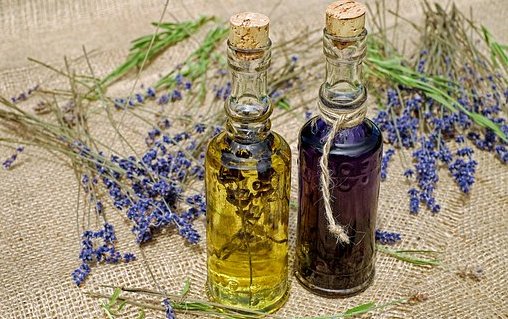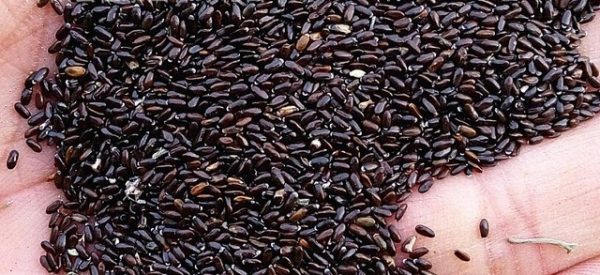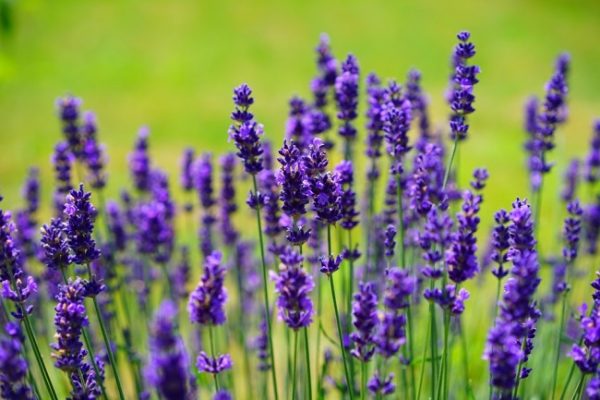Lavender Cultivation Practices:
The following information is all about Lavender Cultivation.
Introduction to Lavender Cultivation
The Lavender plant is a perennial flowering aromatic herb or shrub that can reach a height of 40 cm to 80 cm. The leaves of the Lavender plant are opposite, oblong-linear with small flowers. The Lavender plant is originated in the Mediterranean region. To grow this plant you must have the right climate similar to the Mediterranean area. Lavender can be grown in backyards, pots/containers as well. Few dozens of lavender plants growing in the backyard can make you rich. The commercial cultivation of Lavender on large scale can fetch crores of rupees.
In India, the lavender crop is cultivated in low rainfall regions and on the slopes of hills of Himachal Pradesh(HP) and Uttar Pradesh(UP). The lavender crop is also successfully grown in the Kashmir valley region.
In the following sections, let us find more about Lavender Cultivation from seed and cuttings.
Scientific / Botanical name of Lavender: Lavandula spica.
Family Name of Lavender: Lamiaceae.
Genus of Lavender: Lavandula.
Economic Parts of the Plant: Flowers and oil extracted from the flowers.
Pollination System: Cross-pollinated.
Lavender Uses and Health Benefits
There are various forms of lavender products available which are commercially made from lavender dried leaves and plant essential oils.

- Home decorating.
- Air freshener.
- Lavender essential oil is used in massage therapy.
- Lavender is good for skin health (helps to treat acne and eczema).
- Helps in detoxifying the skin.
- Helps in healing wounds/burns/insect bites.
- Helps in the relaxation of muscles.
- Lavender oil is good for hair health (Treats dandruff, hair fall, lice, and works as a good conditioner).
- Helps in treating insomnia.
- It is a wonderful herb to treat anxiety and depression.
- Helps in curing headaches and aids in digestion.
- Relieves nausea feeling.
- Lavender can aid in relieving bloating.
- Lavender is the best natural perfume.
Lavender Varieties / Lavender Cultivars
There are 4 types of Lavender plants grown in India.
True Lavender Variety
- This variety is the longest-grown lavender species and is native to the Mediterranean area.
- It can be grown 1600 to 1700 meters above sea level.
- The flowering shoots of true lavender plants are about 20 cm to 0.40 cm long & single stalked.
- The grayish-green felty pubescent leaves are about 30 mm to 50 mm long.
- The essential oil content of this variety is about 0.5% to 0.1%.
Spike Lavender Variety
- This variety of Lavender originated in the Mediterranean region and can grow at 250 meters to 700 meters above sea level (m.s.l).
Lavandin Variety
- This variety is a hybrid of true lavender and spike lavender.
- This variety can be grown at heights of 800 meters to 1000 meters above sea level (m.s.l).
- This variety of Lavender shrub can reach a height of 0.8 meters to 1 meter. This variety plant has a hemispherical shape. The spikes of lavender may grow to 0.6 meters to 0.9 meters and generally it is branched. The leaves of this variety are thin, lanceolate, opposite, and green in color without pubescent.
- The essential oil content of this variety is about 0.9% to 3%.
Sher-e-Kashmir Variety
- This variety is released by CIMAP, Lucknow, UP. This is a superior clone with about 100% higher essential oil yields.
Climate for Lavender Cultivation
The ideal climatic conditions are cool winters and cool summers. Lavender is a temperate plant and can tolerate drought and frost conditions. You can get more yields when cultivated at higher altitudes. The lavender crop requires good sunlight as well. In case of poor lighting conditions, one can observe less yield of flowers and reduced essential oil content.
Soil Requirement for Lavender Cultivation
Light well-aerated dry and calcareous soils with slopes rich in organic matter are best for lavender cultivation. Lavender is very sensitive to waterlogging. The ideal soil pH for getting higher essential oil ranges from 7.0 to 8.3. The best part of Lavender is, it can be cultivated even on poor soils and eroded soils. In commercial Lavender cultivation, soil testing helps to find out the suitability.
Land Preparation for Lavender Cultivation
Prepare the land by giving 2 to 3 deep ploughings to remove any weeds, plants and to bring the soil to the fine tilth stage. You can add appropriate well-decomposed farmyard manure (FMY) during land preparation to enrich soil fertility.
Propagation in Lavender Cultivation
Propagation of Lavender can be done by Seeds, Rooted Cuttings (vegetative method), Tissue Culture, and Layering.
By Seeds: Seeds should be sown in prepared beds, 1 meter wide, in an autumn season either through broadcasting method or in row method with 10 cm to 12 cm apart for raising nursery. Small seeds should be mixed with fine coarse sand for uniform distribution. The seed rate of 2.grams is required to cover 1 square meter area. The sowing depth should be about 1 to 2 cm. The seeds should be covered with farmyard manure and should be left in this stage during the winter season. The seeds usually germinate in spring at 14°C to 15°C. Make sure to keep the nursery bed moist always by regularly sprinkling the water. Make sure to prune Lavender seedlings periodically to prevent follicle formation.

By Rooted Cuttings: Cuttings of Lavender should be taken from healthy mother plants grown outdoors. You can use rooting hormones to encourage rooting growth. 10 cm to 15 cm cuttings should be made from young top shoots of the plants. The bottom 2/3rd is stripped from leaves. 1/2 to 2/3rd of the cuttings should be inserted in a proper growing medium and propagated in trays or seedbeds. A mixture of 30% fine farmyard manure/garden compost and 70% sand works well. In the Kashmir region, black polythene covers are used to protect the seedbeds from cold weather.
By Tissue Culture: Lavender tissue culture propagation is very expensive and this method of propagation is done for the mass propagation of lavender from selected mother plants. The advantage of tissue culture is to produce disease-free, and genetically identical plants.
By Layering: In this method of propagation, select a long, healthy stem and remove 12 cm to 15 cm of foliage, leaving 10 cm of foliage at the tip of the branch. You should cover the 9 bare sections with moist soil and the branch will root at the soil level. You should cut the new plants from the mother plants after rooting. The plants should be replanted in the prepared field after the onset of roots usually from 6 to 12 weeks. A liquid organic feed should be provided on a weekly basis.
Planting Season for Lavender Cultivation
Autumn planting is best in mild climatic conditions. This ensures that plants can get established very well just before winter & in spring will grow quicker. Spring planting is the only option in cold winter areas. Planting should be done after the frost is passed.
Planting and Spacing in Lavender Cultivation
Transplantation of Lavender seedling should be done either in autumn or in spring. Lavender is planted at a distance of 4 feet in between rows and 30 cm to 40 cm inside the rows. The plant density of 20,000 per hectare produces the highest yield. Earthing up of soil should be carried out around the seedlings for the root establishment.
Read this: Polyhouse Production.
Irrigation in Lavender Cultivation
In commercial Lavender cultivation, irrigation should be provided for the first 2 years until the crop has been established. In the case of lighter soils and low rainfall regions, irrigation should be provided at crucial stages of plant growth. During flower initiation, you must ensure proper irrigation. Avoid overhead irrigation such as sprinkler irrigation as it can increase disease problems. Adopt drip irrigation in Lavender crop as it can save water and control weed growth.
Manures and Fertilizers in Lavender Cultivation
Lavender crop responds very well to fertilizers. The recommended N, P, K are 100kg, 40kg, 40kg per hectare. As a basal application, use 20 kg of ‘N’ full dose of P205 and K2O. The remaining 80 kg of ‘N’ should be applied in four splits 2 doses during each year.
Intercultural Operations in Lavender Cultivation
Hand hoeing and mechanical weeding (with a tractor-drawn cultivator) should be carried without damaging the roots. You can also provide mulching to reduce weed emergence and increase soil moisture retention.
Flower buds of Lavender should be pruned off during the first two years period to help the plants to develop a strong framework.
Pests and Diseases in Lavender Cultivation
Very few pests occur on lavender and no serious diseases reported in Lavender cultivation. You can contact the horticulture board for any observations of pests and diseases.
Harvesting in Lavender Cultivation
Generally, Lavender plants start flowering earlier in warmer and low altitude regions and flowering starts late in high slopes. As part of harvesting, flowers should be cut with a stem length of 10 cm. In the Kashmir regions, the Lavender crop would be ready for harvesting in August-September.
Yield in Lavender Cultivation

The oil quality and yield depend on variety, soil, agro-climatic conditions, and the process of distillation. Under optimal medicinal/herbal cultivation practices, one can obtain a yield of 15 kg per hectare with an oil content range of 1.2% to 1.5%.
In case if you are interested in this: Hydroponic Nutrient Chart.
- Economical Aquaculture: A Guide to Low-Budget Fish Farming
- 15 Common Planting Errors That Can Doom Your Fruit Trees
- How to Make Houseplants Bushy: Effective Tips and Ideas
- Innovative Strategies for Boosting Coconut Pollination and Yield
- Pollination Strategies for Maximum Pumpkin Yield
- The Complete Guide to Chicken Fattening: Strategies for Maximum Growth
- Natural Solutions for Tulip Problems: 100% Effective Remedies for Leaf and Bulb-Related Issues
- Revolutionizing Citrus Preservation: Towards a Healthier, Greener Future
- Natural Solutions for Peony Leaf and Flower Problems: 100% Effective Remedies
- Maximizing Profits with Avocado Contract Farming in India: A Comprehensive Guide
- Natural Solutions for Hydrangea Problems: 100% Effective Remedies for Leaf and Flowers
- The Ultimate Guide to Choosing the Perfect Foliage Friend: Bringing Life Indoors
- From Sunlight to Sustainability: 15 Ways to Use Solar Technology in Agriculture
- The Ultimate Guide to Dong Tao Chicken: Exploring from History to Raising
- The Eco-Friendly Makeover: How to Convert Your Unused Swimming Pool into a Fish Pond
- Mastering the Art of Delaware Chicken Farming: Essentials for Healthy Backyard Flocks
- 20 Best Homemade Fertilizers for Money Plant: DIY Recipes and Application Methods
- How to Craft a Comprehensive Free-Range Chicken Farming Business Plan
- Brighten Your Flock: Raising Easter Egger Chickens for Beauty and Bounty
- How to Optimize Your Poultry Egg Farm Business Plan with These Strategies
- Subsidy for Spirulina Cultivation: How Indian Government Schemes Encouraging Spirulina Farmers
- Ultimate Guide to Raising Dominique Chickens: Breeding, Feeding, Egg-Production, and Care
- Mastering the Art of Raising Jersey Giant Chickens: Care, Feeding, and More
- Ultimate Guide to Raising Legbar Chickens: Breeding, Farming Practices, Diet, Egg-Production
- How to Raise Welsummer Chickens: A Comprehensive Guide for Beginners
- How to Protect Indoor Plants in Winter: A Comprehensive Guide
- Ultimate Guide to Grow Bag Gardening: Tips, Tricks, and Planting Ideas for Urban Gardeners
Very informative site .good work. Keep it up.
I want to do contract farming I have 40 Acers of agricultural land
Hello Sir/Madam,
Can I GROW LAVENDER AT HOME IN KARAIKAL 609602? This place comes in Tamilnadu geographically & in Puducherry officially.
Please suggest.
Can we grow Lavender in Uttar Pradesh weather ?
Which variety will grown in Uttar Pradesh weather?
I want to cultivate it.
ihave 20 kanals of agricultural land.
High quality land and pure quality .
Etc black soil and red soil sandy soil.
The weather here is good for this.
Thanks.
Got good information. I want to lavender farming at Indore ( Madhya Pradesh) . If yes than can you connect me to the person who can help me in person.
Thanks
Can I do lavender Farming in Solapur, Maharashtra ?
Got two lavender saplings from seeds grown last year though they are growing very slowly grown in cocopeat hope to get blooms soon